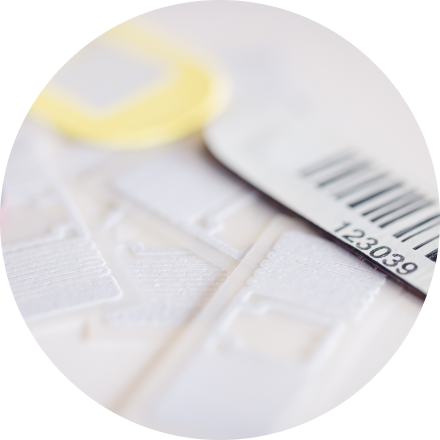Rubber Labels
Different Materials and Processes for Different Labeling Solutions
Rubber Labels
Rubber labels are made of natural or synthetic rubber specially formulated to match the substrates they are applied to. Printed with custom inks for durability, the labels are generally applied during the vulcanization process. Additionally, to increase durability and performance, these labels can be clear coated with one of our UltraFlex or UltraTough specialty coatings, or they can be laminated.


Laminates
Laminates are reverse printed on clear plastic or vinyl with a rubber-based adhesive backing. These labels are pressed and vulcanized with rubber substrates. The laminate protects the printed layer from the environment, making it abrasion-resistant.

Thermal Transfers
and Decals
Thermal transfers and decals are printed with specially designed inks on release liners that can be pressed during or post vulcanization. Once the graphic has been transferred to the substrates by means of pressure and temperature, the release liner can be removed.


Smart Labels
Vulcanizable smart labels, including barcodes, QR codes and RFIDs, provide dynamic product information that extend the communication functionality of our labels.
- Barcode and QR code labels: Individual product tracking.
- RFID labels: Real-time asset compliance tracking that can be combined with human readable information.
- Near Field Communication (NFC) labels: Can be read with a smartphone.

Pre-Cure and Post-Cure
All our labels can be custom designed to be applied during (pre-cure) or after (post-cure) vulcanization. Labels applied before curing are permanent and the most reliable. Post-cure application requires chemical or thermal bonding via a two part rubber gum/rubber cement system. Rubber Labels USA can make recommendations for different bonding applications and feasibility.

Need help with your project? Call 877-348-3795
©Rubber Labels USA 2024 | Digital Marketing by Rebellion Group

